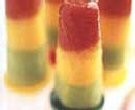Further evidence backs traffic light food label scheme
Australian researchers tested four labelling systems and found that product comparisons could be made quickly and easily under the traffic light (TL) system, according to the study called “Consumer testing of the acceptability and effectiveness of front-of-pack food labelling systems for the Australian grocery market”, published in the journal Health Promotion International.
The 790 consumers surveyed also indicated a reduced intention to purchase products with red and amber nutrient classifications – green being most healthy.
The report said: “If consumers played out such intentions in the marketplace, or if manufacturers anticipated this impact on purchase decisions, compulsory TL labelling could provide impetus for food manufacturers to improve the nutritional profile of their products in order to achieve a more favourable TL rating.”
The findings, which corroborate research from the UK, come at a time when the EU is still debating the best system for the presentation of mandatory nutrition labelling under the proposed new food information legislation.
The favoured system is similar to the guidance daily amount (GDA) method developed and implemented by the food industry, which has been criticised for being too complex as it requires numeracy skills.
An alternative Food Standards Agency’s traffic light labelling scheme has considerable support in the UK but it has also been called too simplistic by some critics.
The comparison
The Australian study looked at consumers’ preferences and ability to compare the healthiness of mock food products in the breakfast cereals, savoury snacks (crispbread) and frozen meals (lasagne) categories for four different front-of-pack labelling systems.
Two were variations of the Percentage Daily Intake system - Monochrome %DI and Colour-Coded %DI - that display the proportion of daily nutrient contribution that a serve of food provides and are the Australian equivalent of GDA.
However, there are no standard serving sizes in Australia, so food manufacturers could manipulate serving sizes to make a product appear to have a healthier nutrient profile.
The other methods were the Traffic Light (TL) and Traffic Light Overall Rating that uses red amber and green colour-coding to indicate nutrient levels.
The TL Overall Rating system ranks levels of total fat, saturated fat, sugar and sodium - as does the TL system - plus an overall rating for the product based on the proposed Food Standards Australia New Zealand Nutrient Profiling criteria.
Based on preference testing, the highest proportion of consumers actually reported that they preferred the CC-%DI system.
However, consumers’ ability to interpret this system was significantly lower than for the TL system and the authors concluded that while consumer preferences were important, the critical issue was whether consumers could use the labelling to make healthier food choices.
Also, using the TL system, participants were five times more likely to identify healthier foods compared with Monochrome %DI and three times more likely compared with Colour-Coded %DI.
The report added: “Considering the plethora of voluntary front-of-pack labelling systems, it is likely that regulations for mandatory labelling are required to ensure that all food manufacturers and retailers provide nutrition information in a consistent format.”
Source: Health Promotion International, published by Oxford University Press
doi:10.1093/heapro/dap012
“Consumer testing of the acceptability and effectiveness of front-of-pack food labelling systems for the Australian grocery market” Authors: Bridget Kelly, Clare Authors: Hughes, Kathy Chapman, et al.






















